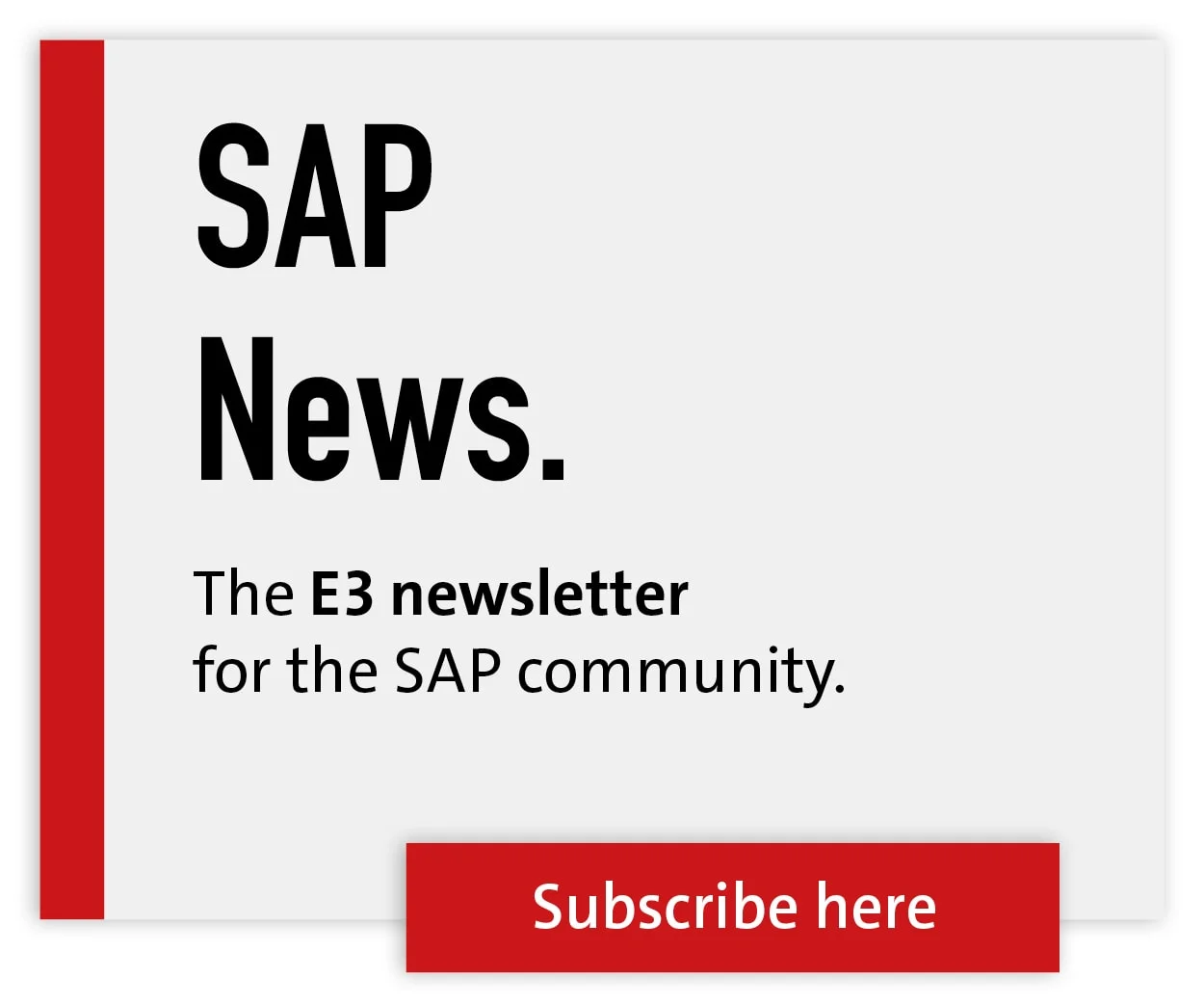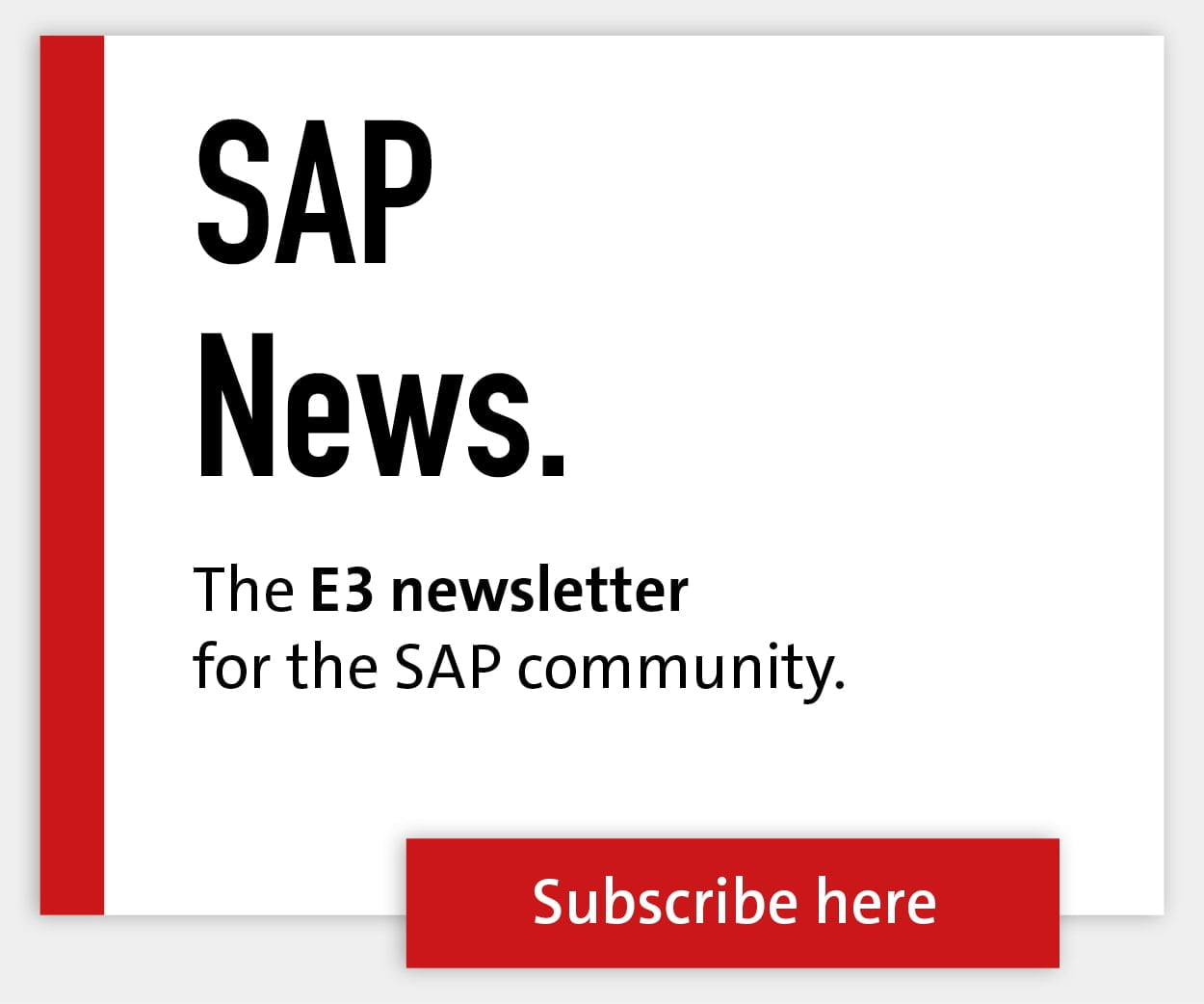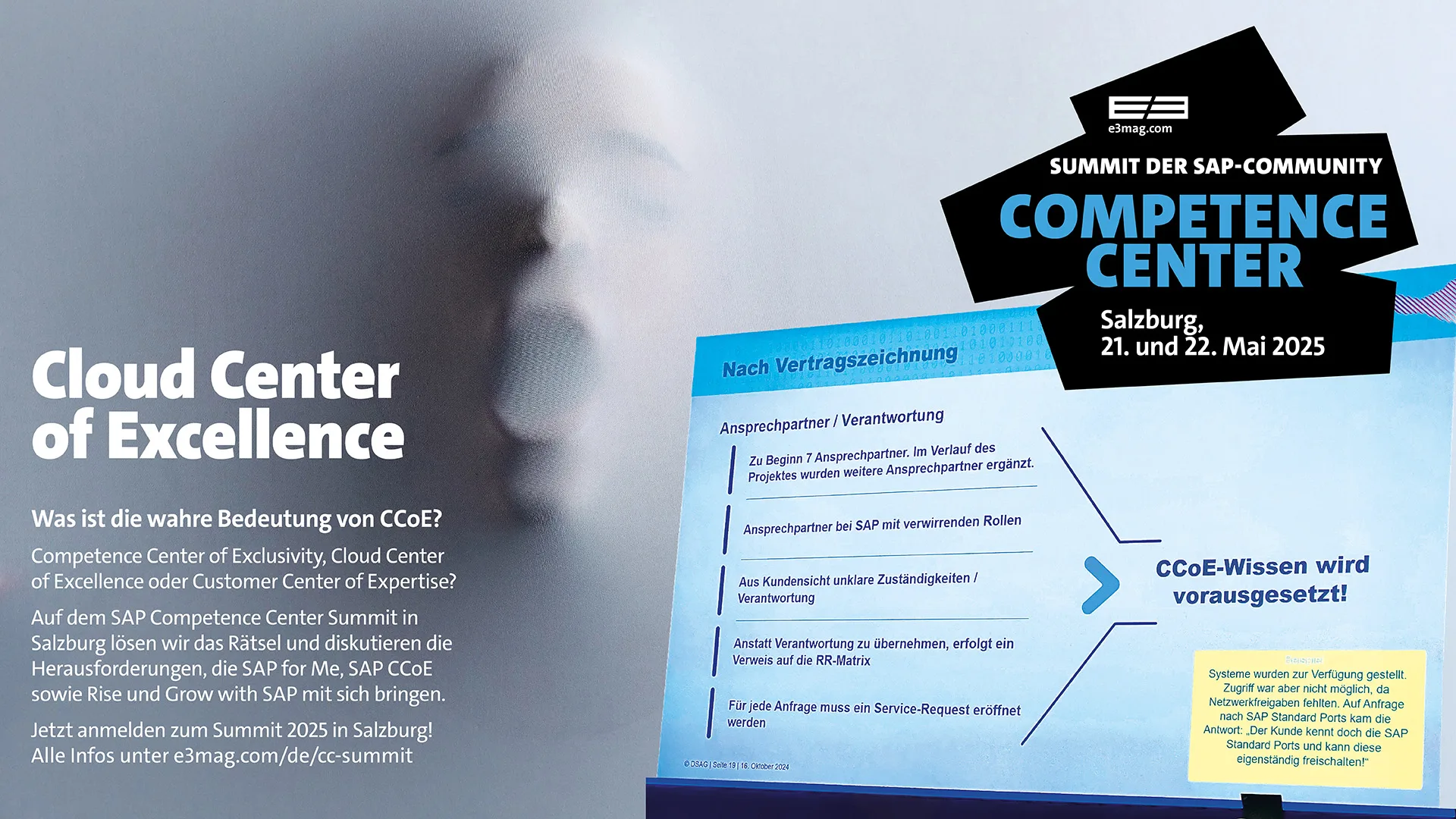Integration Boost: iPaaS Meets BTP


E3: Everyone in the IT scene talks about platforms. Is there a definition for this construct? What does a computer scientist generally understand by an IT Platform?
Donna Matthews, Boomi: In the context of IT, a platform generally refers to a foundational technology or environment that enables the development, deployment, and management of applications and services. It provides a set of tools, frameworks, and services that developers and IT professionals can use to build and run software solutions. A platform can encompass hardware, software, and even cloud-based services, offering a cohesive environment where various components can interact seamlessly. From a computer scientist's perspective, an IT platform is typically characterized by the following elements:
- Foundation for development, deployment and management: A platform provides the infrastructure, tools, and environment for building, testing, and launching applications or services. It abstracts complexities and standardizes processes, enabling developers to focus on innovation and efficient delivery of solutions.
- Integration Capabilities: It allows different applications, AI agents, and data stores to connect and communicate with each other, facilitating data exchange and process automation.
- Scalability: A platform should support the growth of applications and services, handling increased loads and expanding functionalities without significant changes to the underlying architecture.
- Flexibility and Extensibility: It should be adaptable to different use cases and capable of integrating new technologies and services as they emerge.
- Security and Compliance: Ensuring data protection and adherence to regulatory standards is crucial for any platform.
- User Interface and Experience: Providing a user-friendly interface for developers and end-users to interact with the platform effectively.
- Ecosystem Support: A robust platform often has a community or ecosystem that supports development, offering plugins, extensions, and third-party integrations. Going forward, the ability to manage and orchestrate AI agents will become a key distinguishing feature for platforms. In summary, an IT platform serves as a comprehensive environment that supports the lifecycle of applications and services, enabling organizations to innovate and operate efficiently.

E3: How does Boomi define the term platform in the context of “integration platform”?
Matthews: Boomi defines an integration platform as a cloud-native, independent system that supports the integration of applications, APIs, databases, datalakes, AI-agents, and workflows. It is built on distributed computing technologies and is designed to provide ease-of-use, adaptability, flexibility, and scalability for users. The platform enables the development, deployment, and governance of integration flows connecting various processes and services, both on-premises and in the cloud.
E3: Are there different classes and applications of platforms and where does Boomi position itself?
Matthews: Yes, there are different classes and applications of platforms in the integration and automation space. Boomi positions itself as a unified integration Platform as a Service (iPaaS) that combines various capabilities, including integration, automation, data management, and API management. This comprehensive approach allows Boomi to address a wide range of business needs across hybrid multi-cloud landscapes, enabling organizations to connect applications, data, and devices with speed and ease.
E3: There are also offers for IT platforms from the open source sector. Are these a good choice?
Matthews: Open source IT platforms can be a good choice for certain organizations, depending on their specific needs and resources.Ultimately, the decision to use an open source platform should be based on a thorough assessment of the organization's technical capabilities, business requirements, and long-term goals. In some cases, a commercial platform like Boomi may offer additional features, support, and reliability that align better with an organization's needs.
Boomi is a separate and independent platform provider, but many IT providers such as Oracle, Microsoft, SAP and IBM as well as the hyperscalers also supply platform technology. Why should a user switch to an independent and stand-alone provider?
Matthews: Hyperscalers and megavendors often compete directly with SAP’s primary offerings. One of the often recognized benefits of Boomi, as an agnostic provider of integration and automation, is the close technology partnerships we share with vendors such as SAP. As a result of this partnership and from deep investments by Boomi, we have not only achieved SAP certification for our integration, but also developed deeper connectivity to SAP at the application layer that no other integration solution provider offers. This deeper connectivity provides our customers significant advantages for faster integration they can’t achieve through hyperscalers and other integration solution providers.
E3: What are the key criteria for a successful integration and automation platform?
Matthews:
- Familiarity and Credible Use Case Experience: The platform should have a proven track record, verified by industry analysts, with proven successful deployments of use cases that align with industry needs.
- Quality and Accuracy of AI Models: It should effectively manage the quality and accuracy of AI models, ensuring they deliver reliable and actionable insights.
- Monitoring and Maintenance: Continuous monitoring and maintenance of models and integrations are crucial to ensure optimal performance and quick identification of issues.
- Regulatory Compliance: The platform must adhere to relevant regulatory requirements, providing features that support compliance and data protection.
- Data Quality and Access: A strong focus on data quality and access is essential to ensure that integrations and automations are based on accurate and reliable data.
- Data Orchestration: The ability to orchestrate data across various systems seamlessly is key to enabling efficient workflows and processes.
- Return on Investment (ROI): The platform should deliver immediate ROI by enabling teams with time-saving automation and reducing manual efforts.
- User Experience: An intuitive user interface and experience are important to facilitate ease of use for both technical and non-technical users.
- Scalability and Flexibility The platform should be scalable to accommodate growing business needs and flexible to adapt to changing technologies and requirements.
These criteria ensure that an integration and automation platform can effectively support an organization's operations, drive efficiency, and foster innovation.
E3: Does Boomi have a unique selling point in its platform offering?
Matthews: Yes, Boomi has several unique selling points in its platform offering, including its unified platform that combines integration, API management, data management, and automation capabilities. For SAP customers, Boomi offers a unique SAP-certified native integration to the SAP application layer which allows real-time access to SAP tables, views, functional modules, and BW data. Now, customers can seamlessly connect SAP and non-SAP applications, APIs, and data with no complex coding required. Additionally, Boomi is recognized as the leader with the “highest ability to execute” by Gartner in the 2024 Magic Quadrant for iPaaS, and has a strong emphasis on ease of use, security, and scalability. Its extensive community support and comprehensive training resources further enhance its value proposition.
E3: Should an ERP user from the SAP community consolidate on one platform or allow a free play of forces?
Matthews: For an ERP user from the SAP community, the decision to consolidate on one platform or allow a free play of forces depends on several factors, including the organization's specific needs, goals, and existing IT infrastructure.
Consolidating on One Platform:
- Efficiency and Cohesion: A single platform can streamline operations, reduce complexity, and improve data consistency across the organization.
- Simplified Management: Managing integrations, data, and processes through a unified platform can simplify IT operations and reduce the need for multiple vendor relationships.
- Enhanced Security: A consolidated platform can offer more robust security features and compliance management, reducing the risk of data breaches and ensuring regulatory adherence.
- Cost-Effectiveness: While initial investments might be higher, long-term savings can be realized through reduced maintenance and operational costs.
Allowing a Free Play of Forces:
- Flexibility and Innovation: Encouraging a diverse ecosystem of tools and platforms can foster innovation and allow the organization to quickly adapt to new technologies and business needs.
- Best-of-Breed Solutions: Different platforms may offer specialized capabilities that are better suited to specific business functions or industries.
- Avoiding Vendor Lock-In: Using multiple platforms can prevent dependency on a single vendor, allowing for more negotiation power and flexibility in vendor selection.
Ultimately, the choice between consolidation and a free play of forces should be guided by the organization's strategic objectives, IT capabilities, and risk tolerance. A hybrid approach, where core functions are consolidated while allowing flexibility for specific use cases, may also be a viable option. However, with either of these scenarios, the reality is that it is very unlikely that an enterprise will be able to fully consolidate on one platform. A recent SAPInsider report cited that 96% of SAP customers need to run both SAP and non SAP environments, and so whether it is through M&A, subsidiaries, or different regions, there is always a need to integrate non-SAP systems.
E3: SAP is strongly promoting the SAP Business Technology Platform. Where does Boomi fit into this offering?
Matthews: Boomi enhances the functionality of SAP Business Technology Platform (BTP) by providing seamless integration capabilities that streamline processes and improve data flow between SAP and non-SAP applications or databases. This integration allows businesses to leverage the strengths of both platforms, ensuring efficient operations and quicker time-to-value for their digital transformation initiatives.
E3: What could the Boomi platform mean for an existing SAP customer?
Matthews: The Boomi platform provides significant benefits for an existing SAP customer by offering a seamless integration solution able to accelerate migration to SAP S/4HANA. Boomi's SAP-Certified Native connectivity is designed to facilitate seamless integration between SAP systems and other applications, data sources, and processes within an organization's IT landscape. This includes pre-built connectors for various SAP applications, such as SAP S/4HANA, SAP SuccessFactors, SAP Concur, and SAP Ariba, simplifying the integration process by allowing users to connect SAP systems without extensive custom coding.Ultimately, SAP customers using Boomi will benefit from a simplified data exchange between SAP and non-SAP applications, a reduction in integration time and complexity, and will overcome migration challenges such as custom code transformation and integration costs. Additionally, Boomi can help preserve existing investments while driving operational efficiency and analytics on top of SAP data, ultimately enabling customers to meet their migration deadlines and improve their overall business processes.
E3: . At a Boomi event in London last year, an existing SAP customer presented an ERP architecture consisting of BTP, SAP Business Technology Platform, and Boomi. Coincidence or strategy?
Matthews: The integration of Boomi with SAP is a strategic move, not a coincidence, and it is crucial for Boomi to showcase this capability. As SAP is deprecating its core on-premise solutions, many organizations face significant challenges in migrating to SAP S/4HANA. With only 27% of companies having completed their transition by the 2027 deadline, there is an urgent need for solutions that can simplify and expedite this process. Boomi's integration capabilities are designed to reduce the time and complexity associated with migrating from legacy SAP systems to S/4HANA. By highlighting its vendor-agnostic Integration Platform as a Service (iPaaS) with SAP-certified ERP application access, Boomi positions itself as a valuable partner for businesses navigating the complexities of SAP integration. This capability not only helps in building a strong pipeline but also drives customer confidence in Boomi's ability to deliver cost-effective and efficient integration solutions. Showcasing Boomi's ability to integrate with SAP is essential for supporting organizations in their digital transformation efforts. It emphasizes Boomi's role in providing seamless integration that enhances operational efficiency and accelerates time-to-value. By doing so, Boomi reinforces its commitment to helping businesses achieve their strategic objectives and successfully transition to modern SAP environments.
E3: From Boomi's point of view, how does its own platform position itself against SAP BTP?
Matthews: From Boomi's perspective, its platform complements SAP Business Technology Platform (BTP) by offering a vendor-agnostic Integration Platform as a Service (iPaaS) that reduces integration time and complexity. Boomi is uniquely positioned to assist customers in accelerating their migration to SAP S/4HANA while safeguarding existing investments. It provides a seamless integration experience across both SAP and non-SAP applications, enabling organizations to leverage Boomi's capabilities to enhance their digital transformation initiatives. By complementing SAP BTP, Boomi allows businesses to manage integrations more efficiently, particularly as SAP moves away from its core on-premise solutions by 2027. This strategic positioning ensures that organizations can continue to innovate and optimize their operations using a combination of SAP and Boomi technologies, ultimately supporting their long-term business goals.
E3: What would be the advantages and specific unique selling points of Boomi compared to SAP BTP?
Matthews: Boomi offers several advantages and unique selling points when integrating with SAP Business Technology Platform (BTP):
- Seamless Integration: Boomi provides a vendor-agnostic Integration Platform as a Service (iPaaS) that facilitates seamless integration between SAP BTP and other applications, both SAP and non-SAP. This capability ensures that businesses can leverage the strengths of SAP BTP while maintaining connectivity across their entire IT ecosystem.
- User-Friendly Interface: Boomi's low-code platform simplifies the integration process, making it accessible to users without extensive technical expertise. This ease of use accelerates deployment and reduces the need for specialized IT resources.
- Extensive Connector Library: With over 600 pre-built connectors, Boomi enables quick and efficient integration with a wide range of applications and services, enhancing the functionality of SAP BTP.
- Comprehensive Capabilities: Boomi's platform includes features for API management, data management, and workflow automation, providing a holistic integration solution that complements SAP BTP's offerings.
- Efficiency in Migration: By reducing integration time and complexity, Boomi supports organizations in their transition to SAP S/4HANA, ensuring that they can meet migration deadlines and optimize their operations.
- Data Availability: Unlocking on-premises SAP data for analytical use cases is made easy by Boomi’s near real-time replication to cloud data warehouses / data lakes.
These features make Boomi an ideal partner for companies looking to extend their SAP BTP environments with robust, flexible and efficient integration solutions.
E3: How much implementation effort is required to integrate a Boomi platform into an SAP ERP architecture?
Matthews: The implementation effort required to integrate a Boomi platform into an SAP ERP architecture can be significantly reduced due to Boomi's efficient integration capabilities. Boomi is designed to cut integration time and complexity, reducing integration time and effort by 41%. However, the exact amount of effort required can vary depending on the specific integration needs and the existing systems in place. Factors such as the complexity of the SAP environment, the number of systems to be integrated, and the specific business processes involved will influence the overall implementation effort.
E3: How does the Boomi platform communicate and interact with an SAP ERP system, ECC 6.0 or S/4?
Matthews: The Boomi platform communicates and interacts with an SAP ERP system, such as ECC 6.0 or S/4HANA, through the Boomi for SAP connector. This connector enables users to connect to Boomi for SAP core functionality via OpenAPIs, allowing for the retrieval of OpenAPI definitions and the configuration of operations available as part of Boomi for SAP. It supports various features including querying SAP tables, managing BW data, and handling IDocs, among others. Additionally, the Boomi for SAP connector allows non-ABAP resources to design, build, and integrate services between SAP and the Boomi Enterprise Platform without needing in-depth knowledge of the SAP data model. This capability streamlines the integration process and enhances the flexibility and efficiency of managing data and processes between SAP systems and other applications.
E3: Are there interfaces and connectors between Boomi and BTP and, subsequently, between Boomi and the SAP Hana database?
Matthews: Yes, Boomi provides interfaces and connectors that facilitate integration between Boomi and SAP Business Technology Platform (BTP), as well as between Boomi and the SAP HANA database. The Boomi platform offers a range of connectors, including the Boomi for SAP connector, which allows seamless integration with SAP systems. This connector supports interactions with SAP applications and databases, enabling the retrieval and management of data across different SAP environments, including SAP HANA. These connectors are designed to streamline the integration process, allowing organizations to leverage the capabilities of both Boomi and SAP technologies effectively. By using these connectors, businesses can ensure efficient data exchange and process automation between Boomi, SAP BTP, SAP HANA, and even other popular cloud data warehouses and lakes such as Snowflake, Databricks, Google BigQuery, etc. This array of options provides organizations with the flexibility they need to support their digital transformation initiatives.
E3: Finally, what would be the added value for an existing SAP customer when using the Boomi platform alongside Hana, S/4 and BTP?
Matthews: The added value for an existing SAP customer when using the Boomi platform alongside HANA, S/4HANA, and BTP includes several key benefits:
- Accelerated Integration Processes: Boomi's platform speeds up integration processes, allowing businesses to connect SAP and non-SAP applications, APIs, and data more efficiently. This reduces the time and resources required for integration projects
- Reduced Complexity and Time for Migrations: Boomi simplifies the migration process to SAP S/4HANA by reducing complexity and time, enabling organizations to transition smoothly and meet migration deadlines.
- Seamless Management of Applications: Boomi provides a vendor-agnostic Integration Platform as a Service (iPaaS) that allows for seamless management of both SAP and non-SAP applications, APIs, and data ensuring a cohesive IT environment.
- Enhanced Data Management: The platform enables direct data access to SAP systems, facilitating advanced analytics and better data integration across various systems, crucial for effective decision making and maintaining data integrity.
- Improved Operational Efficiency: By integrating with SAP solutions, Boomi helps improve operational efficiency, enabling businesses to optimize their processes and drive innovation.
- Protection of Existing Investments: Boomi allows organizations to protect their existing investments in SAP technologies while facilitating innovation and digital transformation.
These advantages make Boomi a valuable addition to an SAP customer's technology stack, supporting their strategic goals and enhancing their overall business operations.
E3: Thank you very much for the interview.








